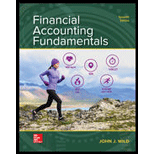
Inventory: Inventory refers to the stock or goods which will be sold in the near future and thus is an asset for the company. It comprises of the raw materials which are yet to be processed, the stock which is still going through the process of production and it also includes completed products that are ready for sale. Thus inventory is the biggest and the important source of income and profit for the business.
Merchandise Inventory: Merchandise inventory is the one which is purchased from the manufacturer with the purpose to sell it to the third party. Wholesalers, retailers, or distributors are ones who indulge into purchasing the products at a lower price and selling them at a higher price so to earn profits.
Lower of cost or market: Lower of cost or market also known as LCM is an approach in which the inventory is recorded in the
Cost: The cost of the inventory herein means the net value incurred to get the inventory ready for sale.
Market value: Market value in the lower of cost or market approach is the cost of replacing, exchanging or substituting the inventory of the company.
To Compute: 1. Lower of cost or market for inventory applied separately to each product.
2. Record LCM
Want to see the full answer?
Check out a sample textbook solution
Chapter 5 Solutions
FINANCIAL ACCT.FUND.(LOOSELEAF)
- A business started the year with inventory worth $35,000. During the year, it purchased additional inventory for $150,000 and ended the year with inventory valued at $42,000. What was the cost of goods sold for the year?arrow_forwardGiven solution for General accounting question not use aiarrow_forwardGranada Company uses the weighted-average method in its process costing system. The first processing department, the Mixing Department, started the month with 20,000 units in its beginning work in process inventory that were 40% complete with respect to conversion costs. The conversion cost in this beginning work-in-process inventory was $32,000. An additional 100,000 units were started into production during the month and 95,000 units were completed in the Mixing Department and transferred to the next processing department. There were 25,000 units in the ending work-in-process inventory of the Mixing Department that were 30% complete with respect to conversion costs. A total of $518,000 in conversion costs were incurred in the department during the month. What would be the cost per equivalent unit for conversion costs for the month? A. $4.89 B. $5.37 C. $4.75 D. $6.21arrow_forward
- Principles of Accounting Volume 1AccountingISBN:9781947172685Author:OpenStaxPublisher:OpenStax College
 Cornerstones of Financial AccountingAccountingISBN:9781337690881Author:Jay Rich, Jeff JonesPublisher:Cengage Learning
Cornerstones of Financial AccountingAccountingISBN:9781337690881Author:Jay Rich, Jeff JonesPublisher:Cengage Learning Financial AccountingAccountingISBN:9781337272124Author:Carl Warren, James M. Reeve, Jonathan DuchacPublisher:Cengage Learning
Financial AccountingAccountingISBN:9781337272124Author:Carl Warren, James M. Reeve, Jonathan DuchacPublisher:Cengage Learning  Financial And Managerial AccountingAccountingISBN:9781337902663Author:WARREN, Carl S.Publisher:Cengage Learning,
Financial And Managerial AccountingAccountingISBN:9781337902663Author:WARREN, Carl S.Publisher:Cengage Learning, Survey of Accounting (Accounting I)AccountingISBN:9781305961883Author:Carl WarrenPublisher:Cengage Learning
Survey of Accounting (Accounting I)AccountingISBN:9781305961883Author:Carl WarrenPublisher:Cengage Learning Financial AccountingAccountingISBN:9781305088436Author:Carl Warren, Jim Reeve, Jonathan DuchacPublisher:Cengage Learning
Financial AccountingAccountingISBN:9781305088436Author:Carl Warren, Jim Reeve, Jonathan DuchacPublisher:Cengage Learning





